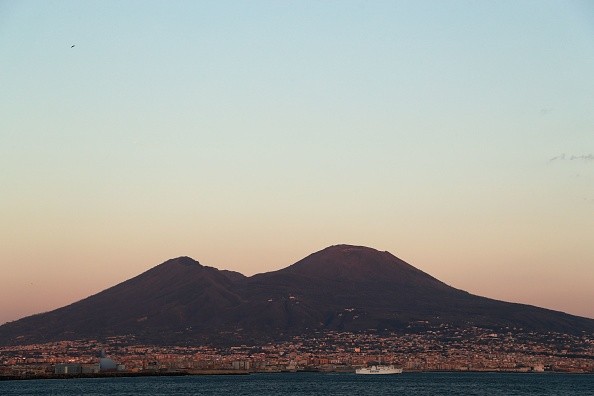A pregnant tortoise was discovered during a Pompeii excavation. When Mount Vesuvius erupted, the animal was supposed to be looking for a spot to lay eggs amid the wreckage of a quake-damaged dwelling.

Finding the Remains
Archaeologists uncovered the bones of a pregnant tortoise who took a safety in the rubble of a home wrecked by an earthquake in AD62, only to be smothered by volcanic ash and rock when Mount Vesuvius erupted.
The Hermann's tortoise and her egg were discovered during excavations of a part of the historic city that had been leveled by the earthquake and was being reconstructed for the construction of public baths, authorities said Friday. After the volcanic explosion in AD79, Pompeii was destroyed.
Archaeologists believe the tortoise, native to southern Europe, found sanctuary in the wreckage of a home that was too seriously damaged by the earthquake to be restored.
Failed to Seek Shelter
The fact that the animal still held her egg showed she perished before finding a secure, friendly spot to deposit it, according to Gabriel Zuchtriegel, director of the Pompeii archaeological park.
"This allows us to reflect on Pompeii after the earthquake, but before the eruption, when many homes were being rebuilt, the entire city was a building site, and apparently, certain places were so underused that wild animals could roam, enter, and try to lay their eggs," he explained.
It is not the first tortoise discovered in Pompeii, and Zuchtriegel stated that organic and agricultural items discovered beyond Pompeii's urban center are an essential subject of ongoing excavations and study.
The tortoise's finding adds to "this tapestry of relationships between culture and nature, community and environment that symbolizes the history of ancient Pompeii," he says.
Also Read : After Being Lost for 70 Years, Brazilian Paleontological Site Leads to the Discovery of Over 100 Fossils
On-Going Excavation
Along with the Pompeii archeological site, the Free University of Berlin, the University of Napoli L'Orientale, and the University of Oxford are excavating in the Stabiane baths portion of Pompeii.
Looking Back

Mount Vesuvius, an Italian volcano in the Bay of Naples, has erupted over 50 times. The volcano's most famous eruption occurred in 79 A.D. when it buried the ancient Roman city of Pompeii under a thick blanket of volcanic ash. According to one witness, the dust "poured across the ground" like a river, shrouding the city in "a darkness...like the black of locked and unlighted rooms."
Two thousand people were killed, and the city was abandoned for over two years. When a party of explorers revisited Pompeii in 1748, they were startled to find it substantially intact behind a thick coating of dust and rubble. The buried city's structures, artifacts, and skeletons have taught us a lot about daily life in the ancient world.
Mt. Vesuvius
Of course, the Vesuvius volcano did not form overnight. Vesuvius volcano is part of the Campanian volcanic arc, which runs along the Italian peninsula's junction of the African and Eurasian tectonic plates and has been erupting for thousands of years.
An extremely intense eruption (called today the "Avellino eruption"), for example, hurled millions of tons of superheated lava, ash, and debris around 22 miles into the sky about 1780 B.C. Almost every village, house, and farm within 15 miles of the mountain were destroyed by this prehistoric disaster.
Related Article : Authorities to Restore Parts of the Stonehenge
For more similar news, don't forget to follow Nature World News!
© 2026 NatureWorldNews.com All rights reserved. Do not reproduce without permission.





